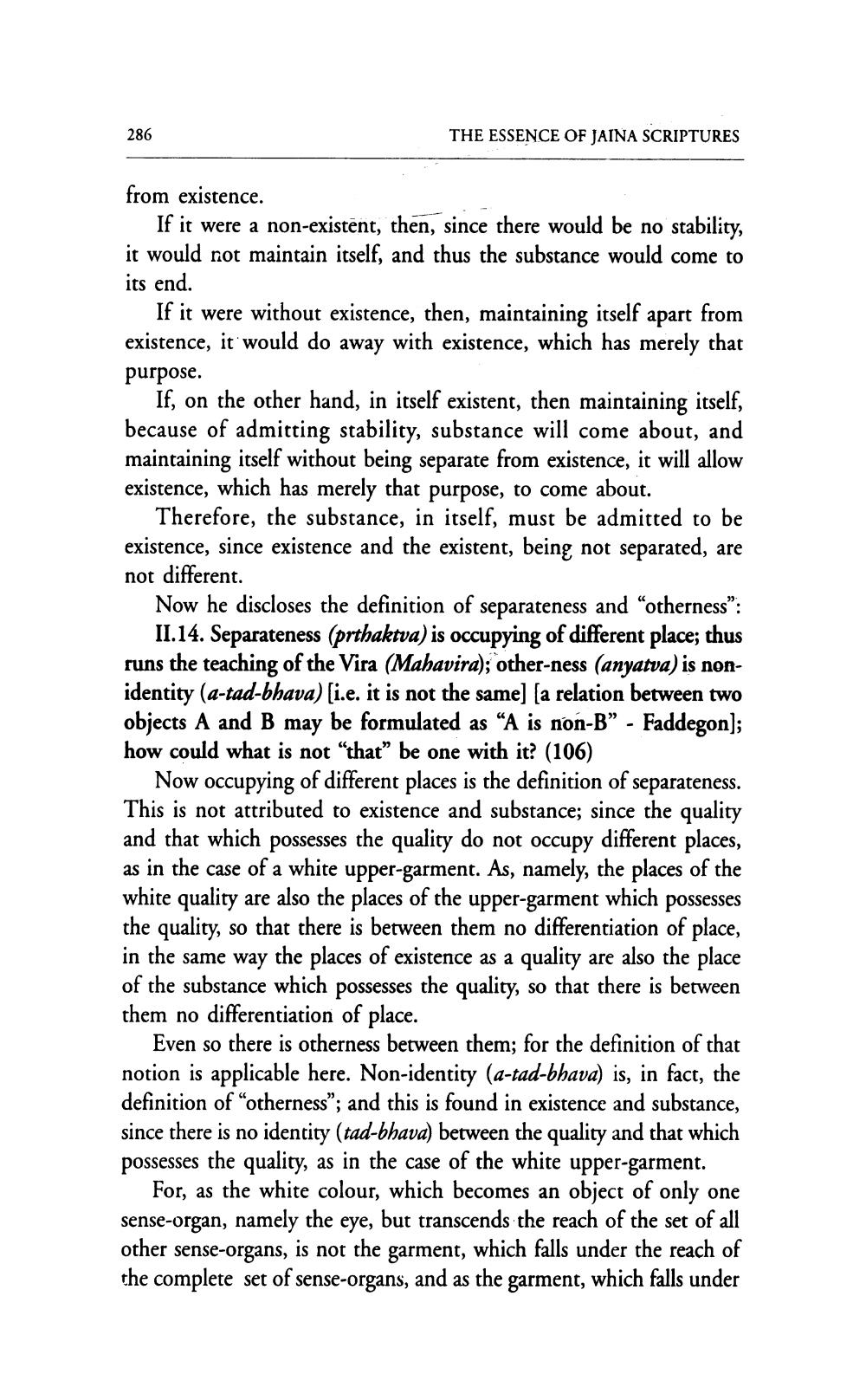________________
286
THE ESSENCE OF JAINA SCRIPTURES
from existence.
If it were a non-existent, then, since there would be no stability, it would not maintain itself, and thus the substance would come to its end.
If it were without existence, then, maintaining itself apart from existence, it would do away with existence, which has merely that purpose.
If, on the other hand, in itself existent, then maintaining itself, because of admitting stability, substance will come about, and maintaining itself without being separate from existence, it will allow existence, which has merely that purpose, to come about.
Therefore, the substance, in itself, must be admitted to be existence, since existence and the existent, being not separated, are not different.
Now he discloses the definition of separateness and “otherness":
II.14. Separateness (prthaktva) is occupying of different place; thus runs the teaching of the Vira (Mahavira); other-ness (anyatva) is nonidentity (a-tad-bhava) [i.e. it is not the same] [a relation between two objects A and B may be formulated as “A is non-B” - Faddegon); how could what is not "that” be one with it? (106)
Now occupying of different places is the definition of separateness. This is not attributed to existence and substance; since the quality and that which possesses the quality do not occupy different places, as in the case of a white upper-garment. As, namely, the places of the white quality are also the places of the upper-garment which possesses the quality, so that there is between them no differentiation of place, in the same way the places of existence as a quality are also the place of the substance which possesses the quality, so that there is between them no differentiation of place.
Even so there is otherness between them; for the definition of that notion is applicable here. Non-identity (a-tad-bhava) is, in fact, the definition of otherness”; and this is found in existence and substance, since there is no identity (tad-bhava) between the quality and that which possesses the quality, as in the case of the white upper-garment.
For, as the white colour, which becomes an object of only one sense-organ, namely the eye, but transcends the reach of the set of all other sense-organs, is not the garment, which falls under the reach of the complete set of sense-organs, and as the garment, which falls under




